New & Noteworthy 1.1
Lighter Documentation
since 1.1M1
It is now possible to describe code with significantly less documentation. We analyze the code, filling documentation blanks from it, making documentation more fluent. 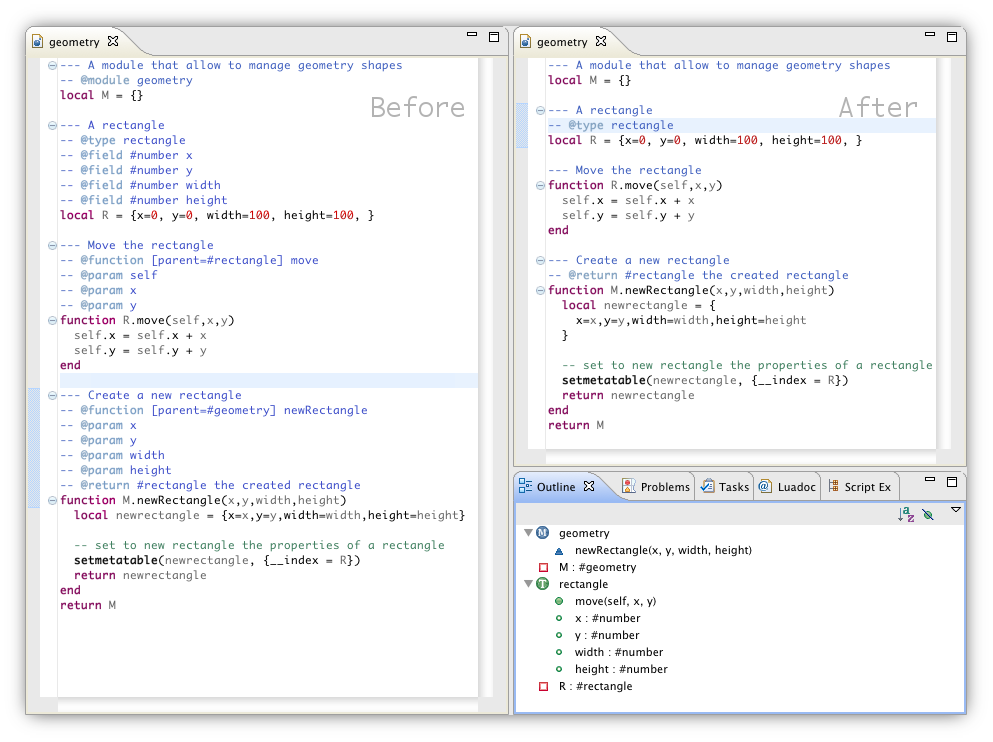
Without inference on left, with inference on right.
Code analysis
since 1.1M1
Tables are a key concept of Lua. It is mandatory for LDT to handle them right to enable you to code at ease.
Table Detection
since 1.1M1
We managed to summarize tables nicely in outline. It is obviously now possible to enjoy table content.
- Fields
- Functions or Methods
- Nested tables
Note: If you click on table fields, you will get code navigation to their definition. 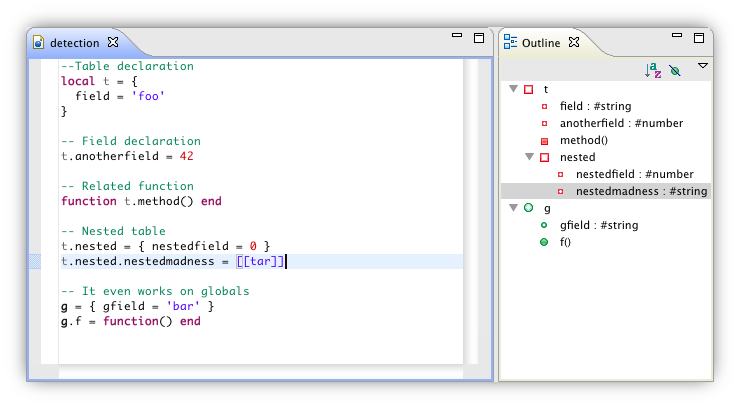
Table detection
Module Detection
since 1.1M1
Turn your table into a module is quite simple: simply return it. As below. 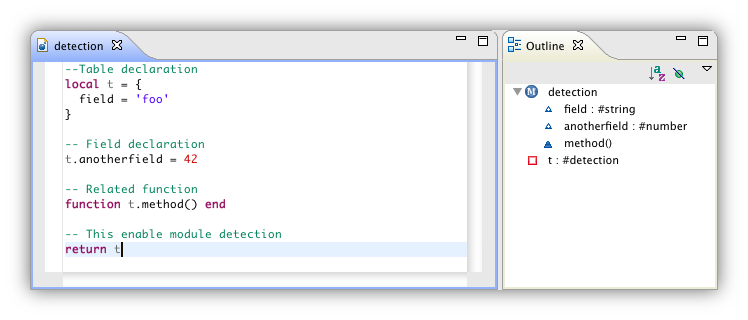
Module detection
Completion Enhancements
Smarter Completion Trigger
since 1.1M2
Auto-completion is now available after function calls or "object" invocations. It is no longer disturbed by whitespaces.

Completion after invocation
More Globals Variables Suggested
since 1.1M2
All globals variables declared in files of your project's buildpath/sourcepath are now suggested in autocompletion.
Note 1: This means LDT could propose you globals variables which may not be available at runtime.
Note 2: This feature could be disabled in the Lua preference page as it could impact autocompletion performance.

Completion on global variables

Preference page
Natural Completion On Strings
since 1.1M1
It now possible to trigger completion on #string variables without using the string module. You have completion for mystring:sub(...).
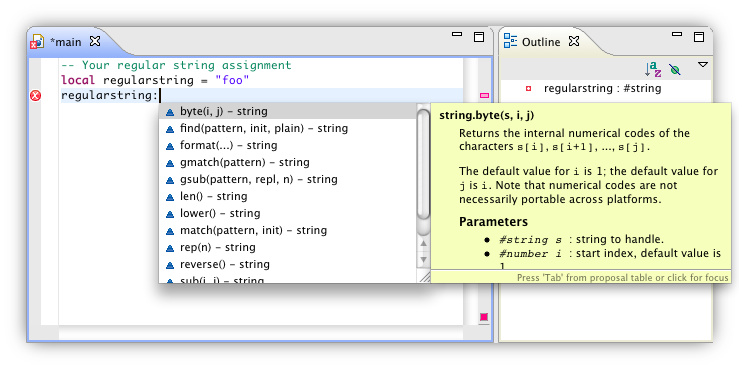
Completion on #string variable from assignment

Completion on #string variable from explicit typing
Better Error Handling
since 1.1M1
To speed up syntax error troubleshooting, the output given is now the Lua 5.1 interpreter one. During the process, syntax error detection became about 10 times faster.
Formatter Defaults
since 1.1M1
For a better out of the box experience, formatter now uses Lua's 2 spaces indentation standard by default.
Formatter Enhancements
since 1.1M2
The formatter is smarter when formating Lua expressions written on several lines.
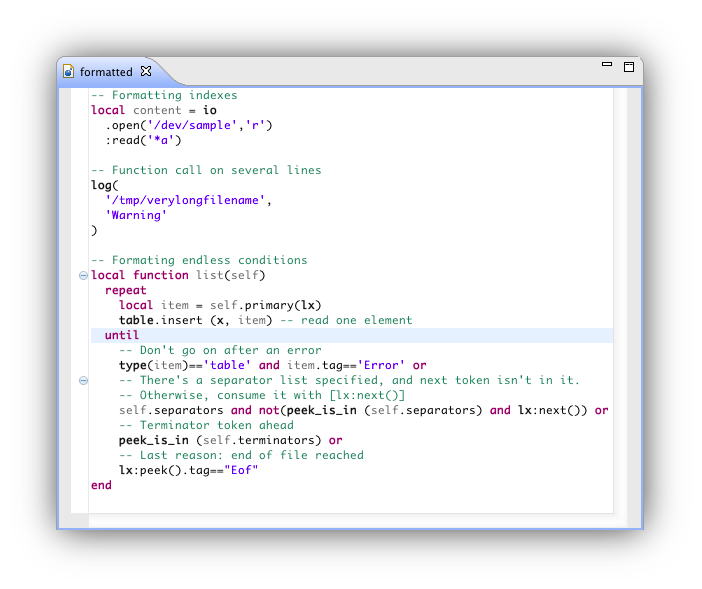
Formatted code
Multi-files Template for Execution Environment
since 1.1M2
When you create your execution environment, it's now possible to include templates made of severals files and folders, in order to help your users to bootstrap their projects. See the create Execution Environment tutorial to get more details.
Note: Existing Execution Environments using the old archive format are still supported.
Debugger Introspection Extensibility
since 1.1M2
The debugger can now be extended with inspectors to decode custom data. Inspectors allow the debugger to display data in a more human readable way. See the custom debugger introspection tutorial for further details. As explained in the tutorial, the inspector for LuaJIT's cdata is shipped with LDT.
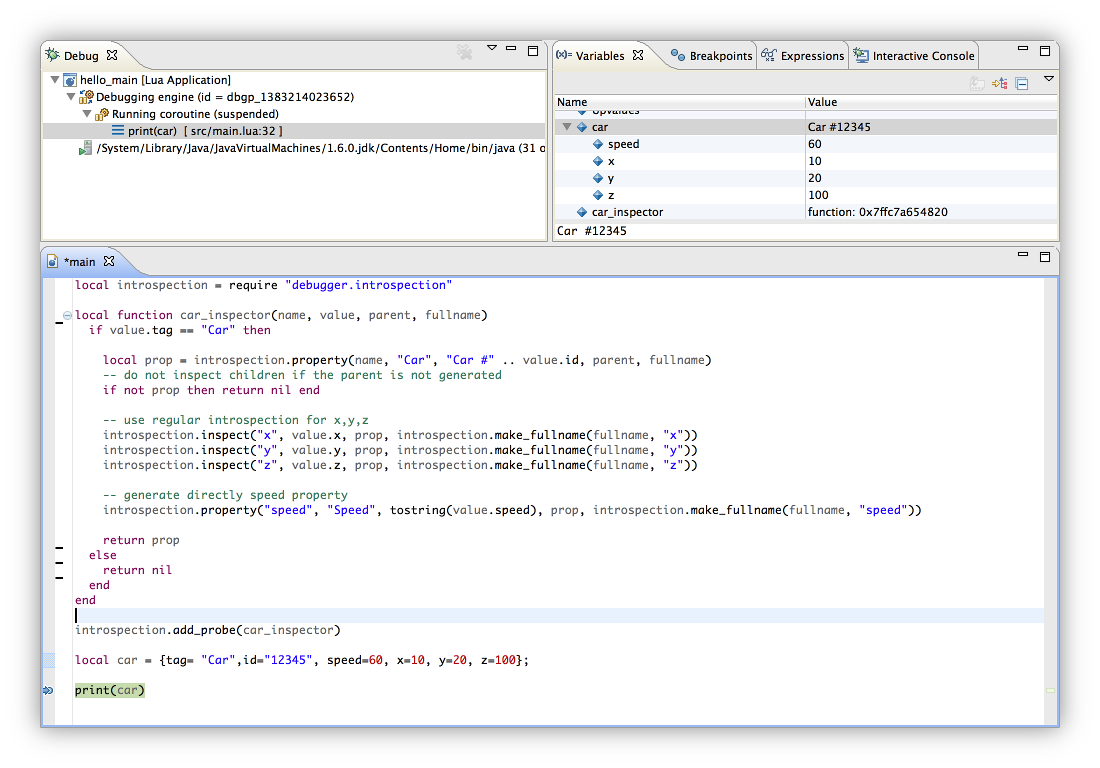
Debugging a car object using a custom inspector
Smarter Auto Close
since 1.1M1
Auto close got smarter and feels more natural. It is a silent improvement. If you did not notice it, it means it works just fine.
